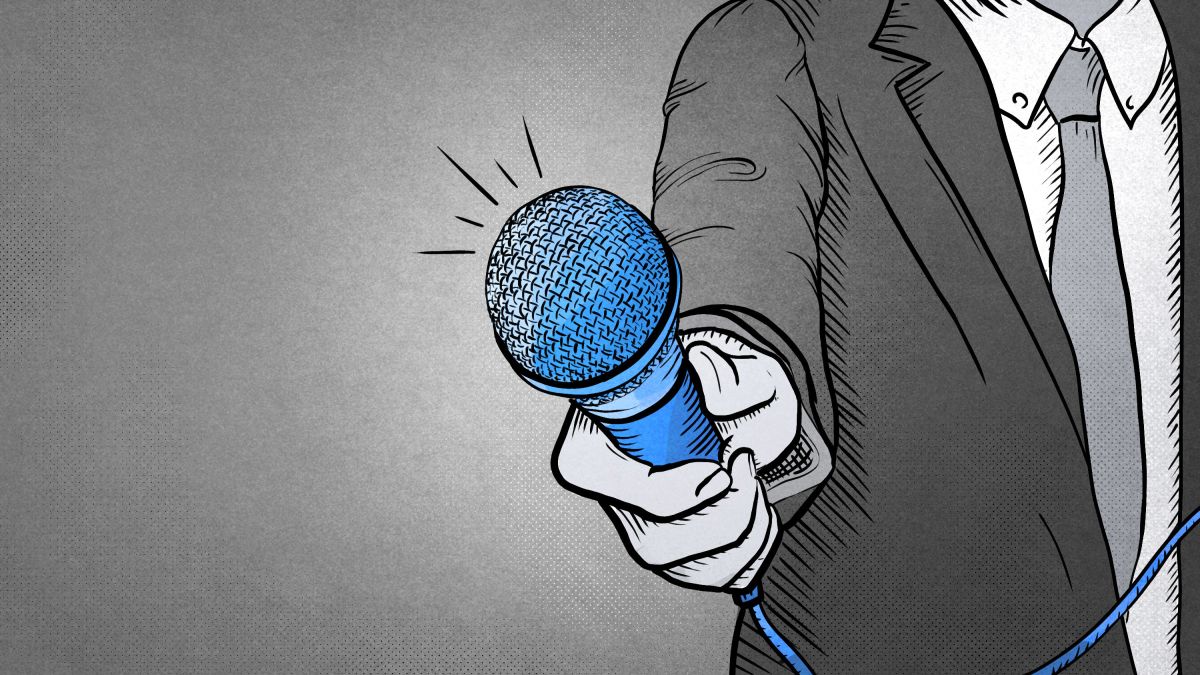CREATIVE LIBERTY AND EMERGING THREATS
INTRODUCTION
If you’re painting a scene that is completely irrelevant to my idea of a perfect society, even then, I cannot stop you from painting and expressing your own beliefs. I don’t have any right to curtail your freedom of expression. So, in a bigger picture, why does a writer’s opinion or a filmmaker’s thoughts get banned or altered in the name of protecting the interests of society? Isn’t there a danger of losing the essence of an artwork by changing some of its parts or by banning a crucial part which the theme of that art demands?
You must have come across a famous saying of Wassily Kandinsky: “There is no must in art because art is free.” Our Indian Constitution also provides for creative liberty under the purview of freedom of speech and expression in Article 19(1)(a). Art is seen as a mirror of our society, but we often deny seeing some of its colors by naming them as obscene, immoral, indecent, and not good for the community standards prevailing as of now. Although it’s a well-versed concept, liberty is not an absolute luxury. This essay intends to divert the focus to the “Reasonability” of restrictions imposed on the liberty of artists because artistic expression is a necessity and a fundamental human right.
CONCEPT OF CREATIVE LIBERTY
Creative Liberty is the liberty which allows a creator of an art to imagine, create and spread diverse beliefs and expressions free of any censorship by government, interference of any political party or the pressures of any other factor. It also includes the right of all citizens to entertain these works and is essential for the wellbeing and upgrading the standards of our society.
In Article 19 of the International Covenant on Civil and Political Rights (ICCPR), the right to freedom of creativity is enumerated as “Everyone shall have the right to freedom of expression; this right shall include freedom to seek, receive and impart information and ideas of all kinds, regardless of frontiers, either orally, in writing or in print, in the form of art, or through any other media of his choice“.(1) In the Indian Constitution, Article 19(1)(a) states that “All citizens shall have the right to freedom of speech and expression” (2). In its Broader Sense, Article 19(1)(a) involves several rights which can be deemed as the engine of Creative Liberty. Some of them are discussed here:
- Right to Publish and Circulate: Right under Article 19(1)(a) extends not only to the Publishing of a Newspaper but also to its circulation. The state could not make laws, which directly affect the Circulation of newspapers. (3)
- Right to Broadcast: The Right of a citizen to exhibit a film on Doordarshan, subject to terms and conditions imposed by Doordarshan is a Fundamental Right. The court held that “this right is similar to the right of a citizen to publish his views through any other medium such as newspapers, magazines, advertisements, hoardings, etc”. (4)
- Right to dissent: An individual has a right to hold Unpopular or Unconventional views, supreme court held this in the case arose out of criminal complaints that were filed against film star Khushboo, for her views on Premarital sex in urban India. The court held that “notions of Social morality are inherently subjective and that criminal law could not be used as a means to interfere with the domain of personal autonomy”. (5)
- Right to portray Social Evils: Filmmakers and Artists possess the Right to use their medium to project life in all its hues, its foibles included. In A. Abbas (6), the supreme court held that “the depiction of social evils as severe as rape, prostitution and the like, cannot be censored. Rather what has to be seen is how the theme is handled by the film-maker”.
- Right to portray historical events: An artist or film-maker has the right to present a historical event and merely because recall of that event may revive tensions or open up old wounds is not a ground for censorship.
- Right to entertain and to be entertained: The term “expression” under Article 19 (1)(a) includes the right of an individual to entertain as well as the right of the audience to be entertained. (7)
CONSTITUTIONAL RESTRICTIONS ON CREATIVE LIBERTY
Liberties are not something that are absolute in their nature; they are constrained by some reasonable restrictions to protect other people’s rights. The imagination of an artist is free and should not be restricted, but its execution is subjected to some limitations. There is nothing wrong with saying that freedom of expression is valid in all senses until it hurts anyone’s feelings. However, the word “Reasonable” is a matter of the court’s discretion, and this word empowers the citizens of the country to turn towards the courts and demand judicial review. The Sixteenth Constitutional Amendment, i.e., the Second Amendment to Article 19, which came in 1963, added that the government had the power to impose restrictions on the freedoms guaranteed under Article 19(1)(a) of the constitution in the interest of “the sovereignty and integrity of India.” After this amendment, Article 19(2) contains the following facets upon which reasonable restrictions can be imposed on the creative liberties of filmmakers and artists (8):
- Sovereignty and Integrity of India
- Security of the State
- Public order
- Decency and Morality
- Contempt of court
- Defamation
- Friendly relations with foreign states
- Incitement to an offence
RESTRICTIONS TURNING INTO A THREAT
The effect of an art must be judged from the standards of reasonable, strong-minded, firm and courtageous men, not from those who scent danger in every hostile point of view. As Hidayatullah CJ remarked in K.A. Abbas (9), “If the depraved begins to see in these things more than what an average person would, in much the same way, as it is wrongly said a Frenchman sees a women’s legs in everything, it cannot be helped.”
Also it can be observed that the gagging of films, books or other forms of publication in the interest of decency and morality have ended up generating more publicity and curiosity than such films or publications ordinarily deserved. There must be a balanced relationship between social interest and individual freedom.
In the case of M.F. Hussain (10), the apex court also observed that “it is most unfortunate that India’s new ‘puritanism’ is being carried out in the name of cultural purity, and a host of ignorant people are vandalizing art and pushing us towards a pre-renaissance era”.
We should always remember that we live in a nation enriched with art and culture, and now, in this age of modernization, we should embrace different thinking, thoughts, and ideas with open arms.
CONCLUSION
Society must be aptly supportive of the fundamental right to free speech and expression, and courts must be circumspect while imposing restrictions like decency and morality. In matters of obscenity, too, the judge must err on the side of liberal interpretation and appreciate the creative work from the artist’s point of view rather than her own. (11) The foremost problem that is to be recognised in this context is that our government isn’t working effectively to upgrade the standards of living and provide quality education to all its citizens. Artists want their liberties to portray western-styled themes, whereas the country is still suffering from a big fat illiteracy issue. In this situation, “Liberty” seems to result in their worst consequences. The threat does not lie in the reasonable restrictions but in the troublesome situation arising out of the conflict between low contemporary standards and the artist’s imagination power beyond these societal norms.
(1) International Covenant on Civil and Political Rights article 19, Dec. 16, 1996, 999 U.N.T.S. 171 (entered into force Mar. 23, 1976) (emphasis added)
(2) Constitution of India, 1950 Art. 19(1)(a)
(3) Sakal Papers (P) Ltd. v. Union of India AIR 1962 SC 305
(4) Odyssey Communications (P) Ltd. v. Lokvidayan sanghatana (1988) 3 SCC 410
(5) Khushboo v. Kanniammal (2010) 5 SCC 600; (2010) 2 SCC (Cri) 1299
(6) K.A. Abbas v. Union of India (1970) 2 SCC 780
(7) Ministry of information & broadcasting v. Cricket Assn. of Bengal, (1995) 2 SCC 161 para. 194
(8) Constitution of India, 1950 Art. 19(2)
(9) K.A. Abbas v. Union of India (1970) 2 SCC 780
(10) Maqbool Fida Hussain v. Rajkumar Pandey 2008 SCC Online Del 562 : 2008 Cri LJ 4107
(11) Maqbool Fida Hussain v. Rajkumar Pandey 2008 SCC Online Del 562 : 2008 Cri LJ 4107










